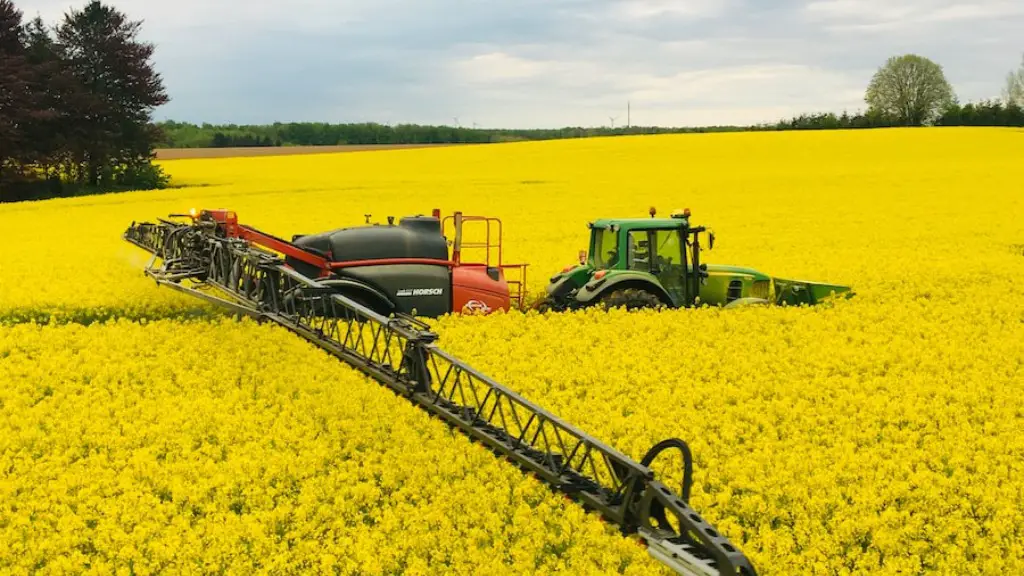What is ICT in Agriculture
ICT, or Information and Communications Technology, is a key driver of transformation in the agricultural sector. It enables efficient data collection and analysis, remote sensing, weather forecasting, optimized farming techniques, and improved decisions making processes. It is also a key enabler for the increased use of precision agriculture techniques, such as precision seeding, nutrient application and harvesting.
ICT can be used to increase yields, reduce risks and improve sustainability. It is fundamental in improving crop production and production efficiency, from soil fertility monitoring to harvest management. Moreover, it helps farmers become more efficient and productive by facilitating timely decisions, enabling better monitoring of the production process, and optimizing the use of resources.
ICT can also help farmers take advantage of automation in the form of farm probes, sensors, and drones, which can be used to monitor crop growth, soil nutrients, and climate conditions. Using ICT in agriculture will help farmers reduce their dependence on traditional paper-based tools and move to more advanced, automated technology solutions.
The use of ICT in agriculture is not limited to crop production and includes the use of technology for animal husbandry, agricultural supply chain management, livestock traceability, and food safety. In addition, ICT can help with agricultural research, extension services, and agricultural marketing.
Overall, ICT can make a significant contribution to the agricultural sector and has the potential to drive innovation, increase productivity and reduce risks. This, in turn, can help to improve the well-being of those working in the sector, as well as enhance opportunities for the growth of small and medium-sized enterprises.
Statistics on ICT in Agriculture
Recent statistics show that ICT is increasingly being incorporated into the agricultural sector. According to the FAO, ICT solutions are now used in over 70% of medium-sized agricultural operations and in more than 30% of small-scale farms. This marks a substantial increase from the approximately 10% that were using ICT in 2012.
In addition, the United Nations has estimated that the use of ICT in agriculture would need to double in order to meet the goals of the Paris Agreement and to achieve food security. This would mean a $2.2 trillion investment in the sector over the next decade. The UN believes that the investment is necessary to better manage the climate impact on crops and to ensure food supply, claiming it is “crucial to unlock the transformative potential of ICT and maximize its contribution to agricultural productivity and sustainability.”
Benefits of ICT in Agriculture
The main benefits of ICT in agriculture include increased efficiency, improved decision making, and enhanced environmental sustainability. By integrating ICT solutions into their operations, farmers can increase yields, reduce risks, improve the quality of their products, minimize the negative environmental impacts associated with agriculture, and increase their revenues.
ICT solutions can help increase production efficiency, improve the marketing of products, optimize the use of resources and, importantly, increase innovation. Moreover, the use of ICT can significantly reduce the cost of production by automating certain activities and making better use of machinery. This cost savings can be passed on to the farmers and ultimately further improve their profitability and competitiveness.
At the same time, ICT solutions can help reduce environmental damage by improving the accuracy of pesticide and fertilizer application. This can reduce input levels and therefore help protect soil and water resources. Additionally, ICT can help with more sustainable management of natural resources and open up possibilities for smart farming.
Finally, the most important benefit of ICT in agriculture is its potential impact on food security. By improving the efficiency of production and marketing, ICT solutions can help provide food to those that need it most. Furthermore, an increased use of ICT will lead to improved data collection and analysis of agricultural production, which could help identify areas of food insecurity and develop solutions for tackling it.
Challenges of ICT in Agriculture
Despite the many potential benefits, there are some challenges associated with ICT and agriculture. One major challenge is that it can be difficult to ensure that ICT solutions are used in an effective and secure manner, due to the complexity of the technologies involved. In addition, implementation costs associated with ICT solutions can be significant and can be difficult to access for the small-holder farmers.
Another challenge is that the use of ICT technologies can be expensive and there is a risk that the benefits do not always match up to the costs incurred. As such, there is a need for appropriate policies and regulations to ensure that ICT solutions are used in an effective way to maximize the potential benefits.
Finally, there is the issue of digital infrastructure. This includes access to reliable internet networks, mobile devices, and data storage. The lack of such infrastructure can be a major limitation for farmers, making the deployment of ICT solutions particularly difficult in certain areas.
Emerging Trends in ICT in Agriculture
The growing popularity of ICT in the agricultural sector has led to the emergence of several key trends. One of the most notable is the increasing use of mobile technologies for data collection, analysis, and decision making. This has enabled the development of mobile apps that can provide farmers with real-time access to data and advice on farming practices. In addition, the use of drones and robotics is becoming more widespread and they are increasingly being used in crop management and precision farming.
Another emerging trend is the use of blockchain technologies, which can help with data privacy, secure transactions, and traceability. This is particularly important in areas such as food safety, traceability, and supply chain management. The increasing use of blockchain technology could enable farmers to better monetize their data and collaborate more efficiently with supply chain partners.
Finally, the use of artificial intelligence (AI) in the agricultural sector will likely be a major trend in the near future. AI can help improve the accuracy and efficiency of decision-making and can use data from satellite images and sensors to improve the management of natural resources. AI technology can also be used to detect and respond to risks such as pests and diseases, which can be very costly for farmers.
Conclusion
In conclusion, ICT is currently revolutionizing the agricultural sector and is being increasingly utilized for optimizing crop production, enhancing decision making and improving environmental sustainability. The use of ICT solutions in the sector offers a range of benefits that can increase farmers’ efficiency and reduce their costs, while also helping to reduce environmental damage. There are, however, some challenges associated with ICT in agriculture and these need to be addressed in order to harness the full potential of the technologies.




